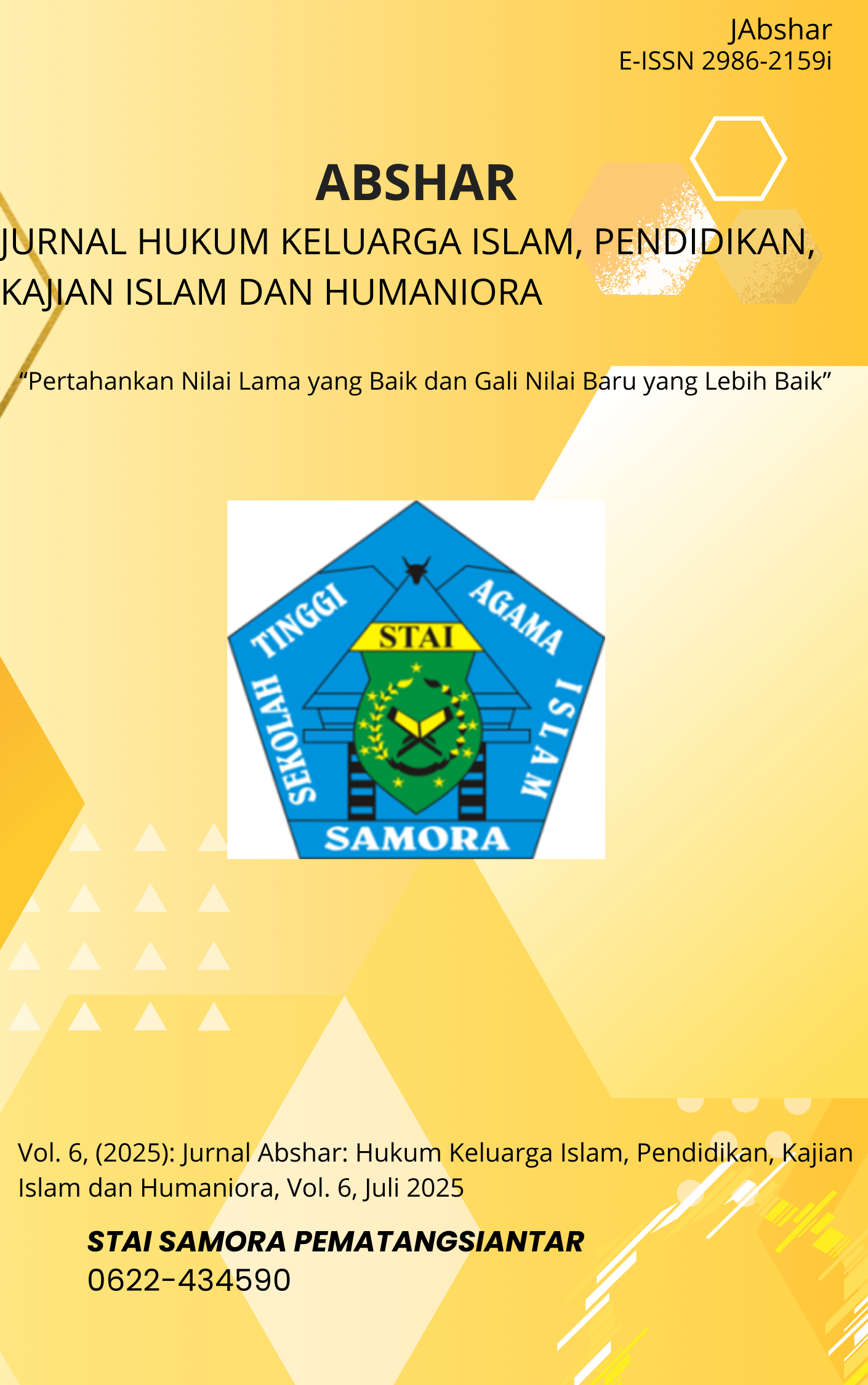Hukum Dan Tujuan Walimatul ‘Ursy Perspektif Hadits Ahkam
Keywords:
Walimatul ‘Ursy, Hadith LawsAbstract
Islam teaches that hosting a wedding celebration, known as walimatul 'ursy, serves as a way to introduce the couple to the larger community. It allows for both the bride and groom to be recognized by others and confirms their union as legally and religiously valid according to their marriage certificate. The purpose of the wedding celebration or walimatul’ursy is also to announce the couple's marriage to the public, which helps prevent rumors when they are seen together. This study seeks to outline comprehension, intentions, and legal implications of Walimatul ‘Ursy through the lens of Hadith Laws. The approach adopted in this research is normative legal analysis. The data being examined and sought after by the author includes books that elaborate on Islamic legal principles. Sheikh Muhammad bin Qasim describes in Fath al-Qarib that a wedding celebration or walimatul ’ursy is encouraged and pertains to the feast held during the wedding. At a minimum, those who can afford it should provide a goat, while those with fewer resources should prepare whatever they are able to offer.
References
Ahmad Saebani, Beni, Fiqh Munakahat 1, Bandung: Pustaka Setia, 2009.
Agama RI, Departemen, Al-Qur’an dan Terjemahnya (Semarang: CV. Toha Putra, 1989.
Ash-Shabbagh, Mahmud, As-Sa’adah az-Zaujiyah fil Islam, Jakarta: CV. Pustaka Mantiq,1993.
Ibn Taimiyah, Majmu’ al-Fatawaa: Bab Nikah, Jakarta: Pustaka Azzam, 2002.
Imam Nawawi, Syarah Shahih Muslim, jilid 4, Jakarta: Dar al-Sunnah, 2015.
Majid Mahmud Mathlub, Abdul, Panduan Hukum Keluarga Sakinah, Solo: Intermedia, 2005.
Syaikh Muhammad bin Qasim, Fath al-Qarib, Surabaya: Kharisma, 2000.
Sayyid Sabiq, Fiqih Sunnah, Jakarta: Pena Pundi Aksara, 2008.
Downloads
Published
How to Cite
Issue
Section
License
Copyright (c) 2025 Maryam Sarinah, Leo Fernando Silalahi, Vanka Alicia Putri Melisa

This work is licensed under a Creative Commons Attribution-NonCommercial 4.0 International License.

This work is licensed under a Creative Commons Attribution 4.0 International License.
Authors who publish with this journal agree to the following terms:
- Authors retain copyright and grant the journal right of first publication with the work simultaneously licensed under Creative Commons Attribution 4.0 International License that allows others to share the work with an acknowledgement of the work's authorship and initial publication in this journal.
- Authors are able to enter into separate, additional contractual arrangements for the non-exclusive distribution of the journal's published version of the work (e.g., post it to an institutional repository or publish it in a book), with an acknowledgement of its initial publication in this journal.
- Authors are permitted and encouraged to post their work online (e.g., in institutional repositories or on their website) prior to and during the submission process, as it can lead to productive exchanges, as well as earlier and greater citation of published work (Refer to The Effect of Open Access).









